Transverse Crack Detection in 3D Angle Interlock Glass Fibre Composites Using Acoustic Emission
Abstract
:1. Introduction
1.1. Damaged Monitored by Acoustic Emission in Composite Materials
1.2. Guided Waves
2. Materials Presentations and Experimental Set-Up
3. Angle Interlock Cracking Simulation
4. Acoustic Emission Simulation
5. Results and Discussion
5.1. Multi-Physics Finite Element Simulation
5.2. Experiments
5.3. Stress Amplification Factor
6. Concluding Remarks
Acknowledgments
Author Contributions
Conflicts of Interest
References
- Gorman, M.R.; Proser, W.H. AE source by plate analysis. J. Acoust. Emiss. 1991, 9, 238–288. [Google Scholar]
- Gresil, M.; Giurgiutiu, V. Prediction of attenuated guided waves propagation in carbon fiber composites using Rayleigh damping model. J. Intell. Mater. Syst. Struct. 2015, 26, 2151–2169. [Google Scholar] [CrossRef]
- Mullin, J.; Berry, J.M.; Gatti, A. Some Fundamental Fracture Mechanisms Applicable to Advanced Filament Reinforced Composites. J. Compos. Mater. 1968, 2, 82–103. [Google Scholar]
- Mehan, R.L.; Mullin, J.V. Analysis of Composite Failure Mechanisms Using Acoustic Emissions. J. Compos. Mater. 1971, 5, 266–269. [Google Scholar] [CrossRef]
- Godin, N.; Huguet, S.; Gaertner, R. Integration of the Kohonen’s self-organising map and k-means algorithm for the segmentation of the AE data collected during tensile tests on cross-ply composites. NDT E Int. 2005, 38, 299–309. [Google Scholar] [CrossRef]
- Wadim, J.R. Acoustic Emission Applications; D. Endevco: San Juan Capistrano, CA, USA, 1978. [Google Scholar]
- Chen, O.; Karandikar, P.; Takeda, N.; Kishi Rcast, T. Acoustic emission characterization of a glass-matrix composite. Nondestr. Test. Eval. 1992, 8, 869–878. [Google Scholar] [CrossRef]
- Ceysson, O.; Salvia, M.; Vincent, L. Damage mechanisms characterisation of carbon fibre/epoxy composite laminates by both electrical resistance measurements and acoustic emission analysis. Scr. Mater. 1996, 34, 1273–1280. [Google Scholar] [CrossRef]
- Kim, S.-T.; Lee, Y.-T. Characteristics of damage and fracture process of carbon fiber reinforced plastic under loading-unloading test by using AE method. Mater. Sci. Eng. A 1997, 234, 322–326. [Google Scholar] [CrossRef]
- Kotsikos, G.; Evans, J.T.; Gibson, A.G.; Hale, J. Use of acoustic emission to characterize corrosion fatigue damage accumulation in glass fiber reinforced polyester laminates. Polym. Compos. 1999, 20, 689–696. [Google Scholar] [CrossRef]
- Gong, X.L.; Laksimi, A.; Benzeggagh, M.L. Nouvelle approche de l’émission acoustique et son application à l’identification des mécanismes d’endommagement dans les matériaux composites. Rev. Compos. Matér. Av. 1998, 8, 179–205. [Google Scholar]
- Masmoudi, S.; El Mahi, A.; El Guerjouma, R. Mechanical behaviour and health monitoring by acoustic emission of sandwich composite integrated by piezoelectric implant. Compos. Part B Eng. 2014, 67, 76–83. [Google Scholar] [CrossRef]
- Barré, S.; Benzeggagh, M.L. On the use of acoustic emission to investigate damage mechanisms in glass-fibre-reinforced polypropylene. Compos. Sci. Technol. 1994, 52, 369–376. [Google Scholar] [CrossRef]
- Komai, K.; Minoshima, K.; Shibutani, T. Investigations of the Fracture Mechanism of Carbon/Epoxy Composites by AE Signal Analyses. JSME Int. J. 1991, 34, 381–388. [Google Scholar] [CrossRef]
- Li, L.; Lomov, S.V.; Yan, X.; Carvelli, V. Cluster analysis of acoustic emission signals for 2D and 3D woven glass/epoxy composites. Compos. Struct. 2014, 116, 286–299. [Google Scholar] [CrossRef]
- Liu, P.F.; Chu, J.K.; Liu, Y.L.; Zheng, J.Y. A study on the failure mechanisms of carbon fiber/epoxy composite laminates using acoustic emission. Mater. Des. 2012, 37, 228–235. [Google Scholar] [CrossRef]
- Russel, S.S.; Henneke, E.G. Signature Analysis of Acoustic Emission from Graphite/Epoxy Composites; Interim Report, NASA Grant NSG 1238, Report No. VPI-E-77–221977; Langley Research Center: Hampton, VA, USA, 1977. [Google Scholar]
- Suzuki, M.; Nakanishi, H.; Iwamoto, M.; Jiao, G.-Q.; Koike, K.; Imura, M. Fatigue Fracture Mechanism of Class A-SMC by Acoustic Emission Method. J. Soc. Mater. Sci. Jpn. 1987, 36, 1402–1408. [Google Scholar] [CrossRef]
- Suzuki, M.; Kida, S.; Shimbo, M.; Miyano, Y. Effects of fiber content on fracture mechanisms of short fiber reinforced PET composites. Trans. Jpn. Soc. Mech. Eng. Ser. A 1990, 56, 1030–1035. [Google Scholar] [CrossRef]
- De Groot, P.J.; Wijnen, P.A.M.; Janssen, R.B.F. Real-time frequency determination of acoustic emission for different fracture mechanisms in carbon/epoxy composites. Compos. Sci. Technol. 1995, 55, 405–412. [Google Scholar] [CrossRef]
- Ramirez-Jimenez, C.R.; Papadakis, N.; Reynolds, N.; Gan, T.H.; Purnell, P.; Pharaoh, M. Identification of failure modes in glass/polypropylene composites by means of the primary frequency content of the acoustic emission event. Compos. Sci. Technol. 2004, 64, 1819–1827. [Google Scholar] [CrossRef]
- Gutkin, R.; Green, C.J.; Vangrattanachai, S.; Pinho, S.T.; Robinson, P.; Curtis, P.T. On acoustic emission for failure investigation in CFRP: Pattern recognition and peak frequency analyses. Mech. Syst. Sign. Process. 2011, 25, 1393–1407. [Google Scholar] [CrossRef]
- Bussiba, A.; Kupiec, M.; Ifergane, S.; Piat, R.; Böhlke, T. Damage evolution and fracture events sequence in various composites by acoustic emission technique. Compos. Sci. Technol. 2008, 68, 1144–1155. [Google Scholar] [CrossRef]
- Jong, H.-J. Transverse Cracking in a Cross-ply Composite Laminate—Detection in Acoustic Emission and Source Characterization. J. Compos. Mater. 2006, 40, 37–69. [Google Scholar] [CrossRef]
- Lomov, S.; Karahan, M.; Bogdanovich, A.; Verpoest, I. Monitoring of acoustic emission damage during tensile loading of 3D woven carbon/epoxy composites. Text. Res. J. 2014, 84, 1373–1384. [Google Scholar] [CrossRef]
- Viktorov, I.A. Rayleigh and Lamb Waves—Physical Theory and Application; New York Plenum Press: New York, NY, USA, 1967. [Google Scholar]
- Achenbach, J.D. Wave Propagation in Elastic Solids: North-Holland Series in Applied Mathematics and Mechanics; Elsevier: Amsterdam, The Netherlands, 1973. [Google Scholar]
- Graff, K.F. Wave Motion in Elastic Solids; Dover Publications: London, UK, 1975. [Google Scholar]
- Rose, J.L. Ultrasonic Waves in Solid Media; Cambridge University Press: Cambridge, UK, 1999. [Google Scholar]
- Dieulesaint, E.; Royer, D. Ondes Élastiques Dans Les Solides—Tome 1: Propagation Libre et Guidée; Masson: Paris, France, 1996. [Google Scholar]
- Harker, A.H. Elastic Waves in Solids; British Gas/Adam Hilger: Bristol, UK, 1987. [Google Scholar]
- Wilcox, P.; Lowe, M.; Cawley, P. The effect of dispersion on long-range inspection using ultrasonic guided waves. NDT E Int. 2001, 34, 1–9. [Google Scholar] [CrossRef]
- Alleyne, D.N.; Cawley, P. The interaction of Lamb waves with defects. IEEE Trans. Ultrason. 1992, 39, 381–397. [Google Scholar] [CrossRef] [PubMed]
- Mal, A.K.; Chang, Z. Scattering of lamb wave from a rivet hole with edge cracks. Mech. Mater. 1999, 31, 197–204. [Google Scholar]
- Lemistre, M.; Balageas, D. Structural health monitoring system based on diffracted Lamb wave analysis by multiresolution processing. Smart Mater. Struct. 2001, 10, 504–511. [Google Scholar] [CrossRef]
- Standard Test Method for Tensile Properties of Polymer Matrix Composite Materials; ASTM D3039/D3039M-14; ASTM International: West Conshohocken, PA, USA, 2014.
- Gresil, M.; Yu, L.; Giurgiutiu, V.; Sutton, M. Predictive modeling of electromechanical impedance spectroscopy for composite materials. Struct. Health Monit. 2012, 11, 671–683. [Google Scholar] [CrossRef]
- Nairn, J.A. Applications of finite fracture mechanics for predicting fracture events in composites. In Proceedings of the 5th International Conference on Deformation and Fracture of Composites, London, UK, 18–19 March 1999.
- Nasr Saleh, M.; Lubineau, G. Understanding the mechanisms that change the conductivity of damaged ITO-coated polymeric films: A micro-mechanical investigation. Sol. Energy Mater. Sol. Cells 2014, 130, 199–207. [Google Scholar] [CrossRef]
- Obert, E.; Daghia, F.; Ladevèze, P.; Ballere, L. Micro and meso modeling of woven composites: Transverse cracking kinetics and homogenization. Compos. Struct. 2014, 117, 212–221. [Google Scholar] [CrossRef]
- Saleh, M.N.; Yudhanto, A.; Potluri, P.; Lubineau, G.; Soutis, C. Characterising the loading direction sensitivity of 3D woven composites: Effect of z-binder architecture. Compos. Part A Appl. Sci. Manuf. 2016, in press. [Google Scholar]
- Cox, B.N.; Dadkhah, M.S. The Macroscopic Elasticity of 3D Woven Composites. J. Compos. Mater. 1995, 29, 785–819. [Google Scholar] [CrossRef]
- Yu, B.; Blanc, R.; Soutis, C.; Withers, P.J. Evolution of damage during the fatigue of 3D woven glass-fibre reinforced composites subjected to tension–tension loading observed by time-lapse X-ray tomography. Compos. Part A Appl. Sci. Manuf. 2016, 82, 279–290. [Google Scholar] [CrossRef]
- Yu, B.; Bradley, R.S.; Soutis, C.; Hogg, P.J.; Withers, P.J. 2D and 3D imaging of fatigue failure mechanisms of 3D woven composites. Compos. Part A Appl. Sci. Manuf. 2015, 77, 37–49. [Google Scholar] [CrossRef]
- Surgeon, M.; Wevers, M. Modal analysis of acoustic emission signals from CFRP laminates. NDT E Int. 1999, 32, 311–322. [Google Scholar] [CrossRef]
- Gresil, M.; Yu, L.; Shen, Y.; Giurgiutiu, V. Predictive model of fatigue crack detection in thick bridge steel structures with piezoelectric wafer active sensors. Smart Struct. Syst. 2013, 12, 97–119. [Google Scholar] [CrossRef]
- Gresil, M.; Shen, Y.; Giurgiutiu, V. Predictive modeling of ultrasonics SHM with PWAS transducers. In Proceedings of the 8th International Workshop on Structural Health Monitoring, Stanford, CA, USA, 13–15 Septmeber 2011.
- Vallen-System GmbH, Munich, Germany. 2001. Available online: http://www.vallen.de/wavelet/index.html (accessed on 15 January 2014).
- Junior, P.C.P.; Bussamra, F.L.S.; Arakaki, F.K. Finite element procedure for stress amplification factor recovering in a representative volume of composite materials. J. Aerosp. Technol. Manag. 2011, 3, 239–250. [Google Scholar] [CrossRef]
- Mao, J.Z.; Sun, X.S.; Ridha, M.; Tan, V.B.C.; Tay, T.E. A Modeling Approach Across Length Scales for Progressive Failure Analysis of Woven Composites. Appl. Compos. Mater. 2012, 20, 213–231. [Google Scholar] [CrossRef]

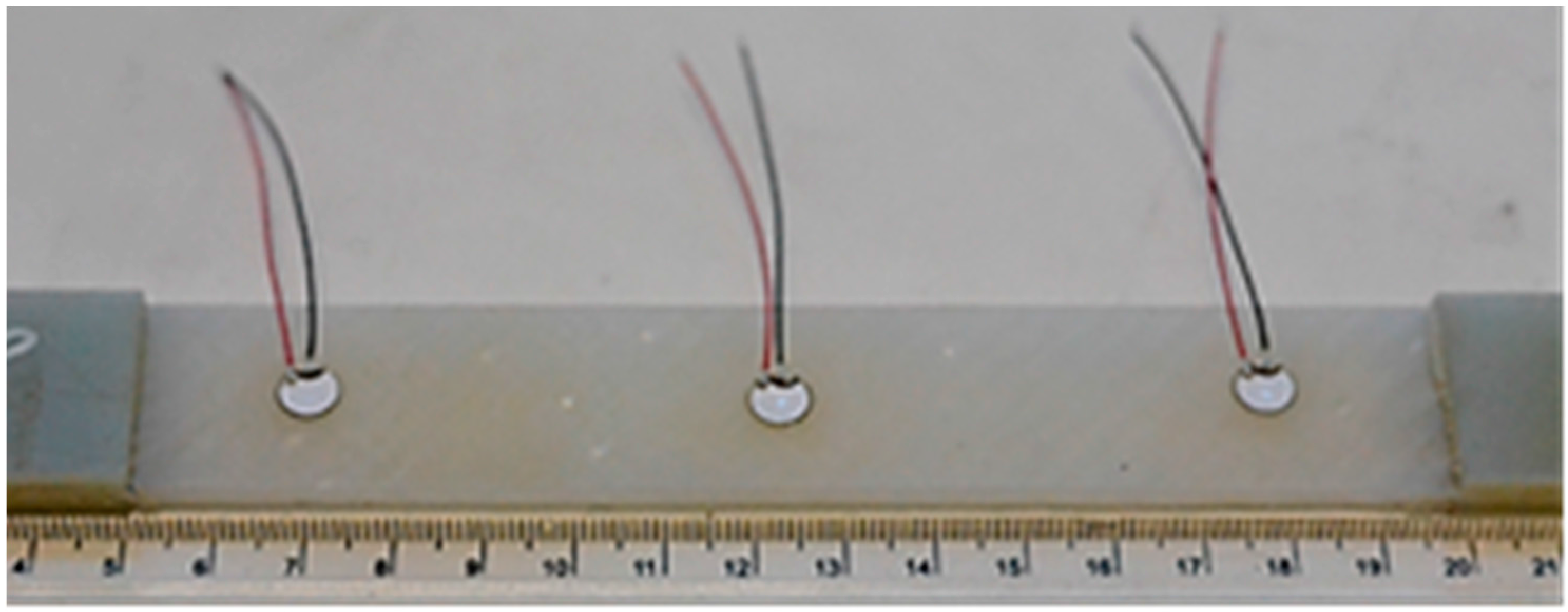
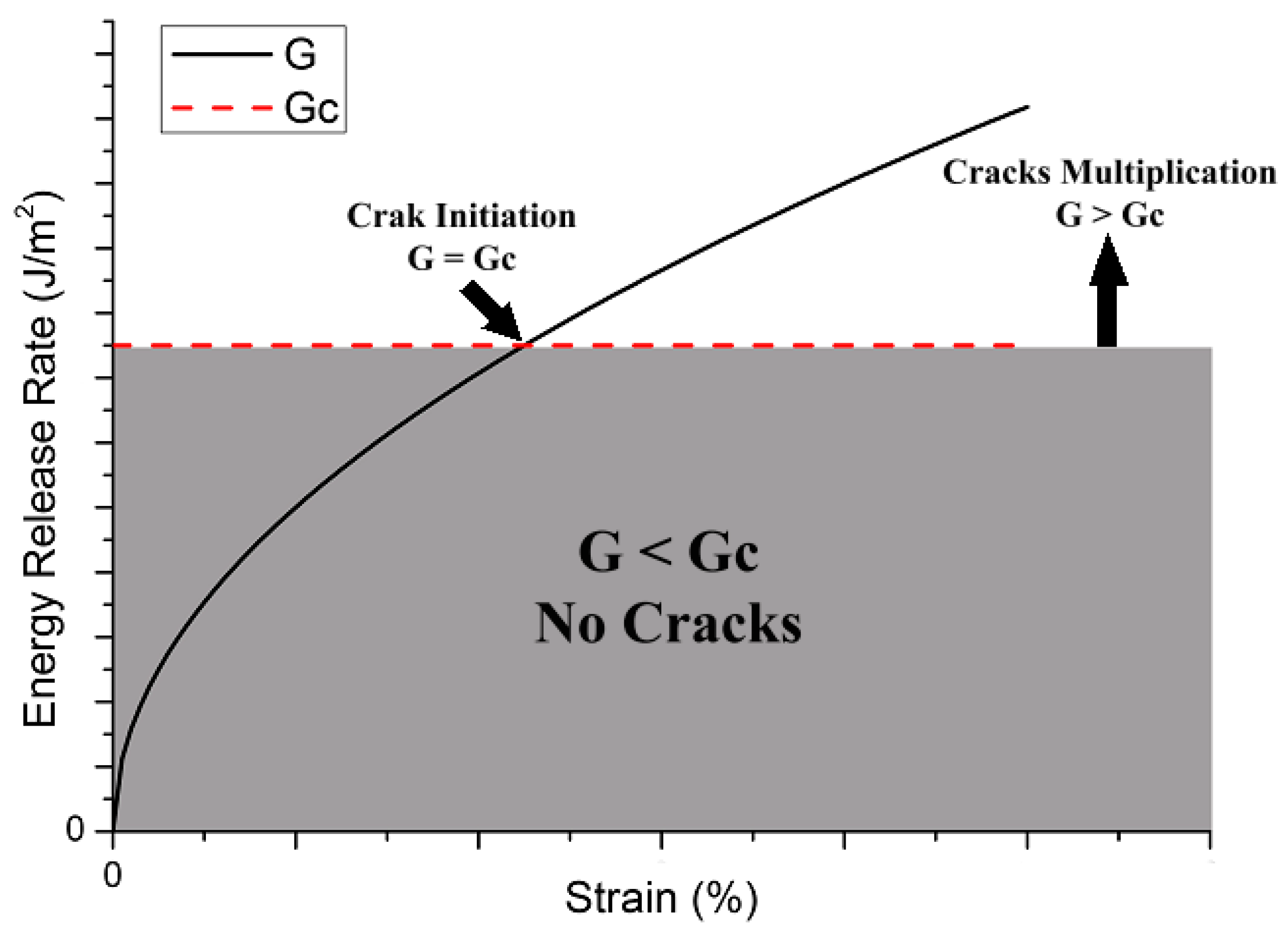

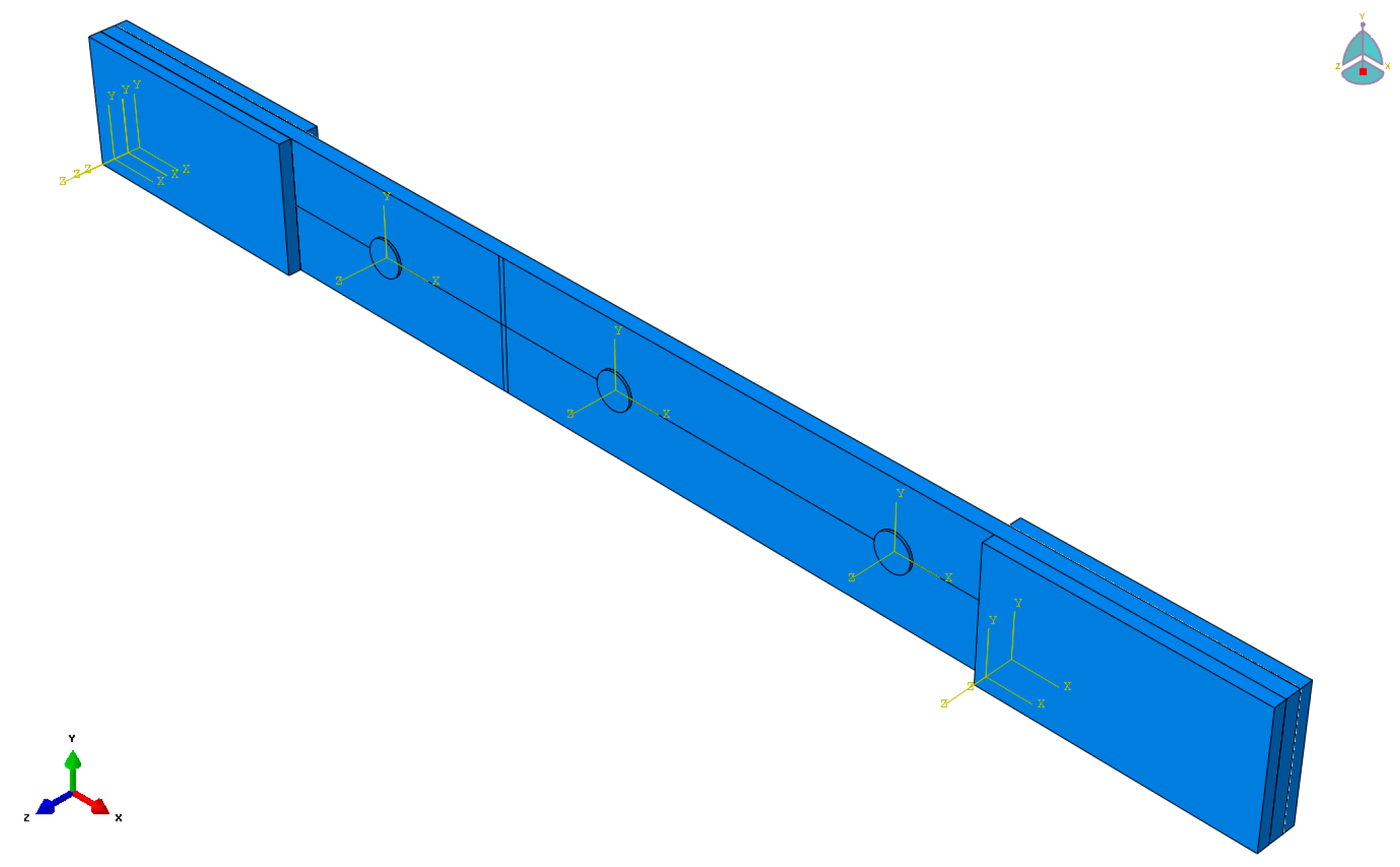


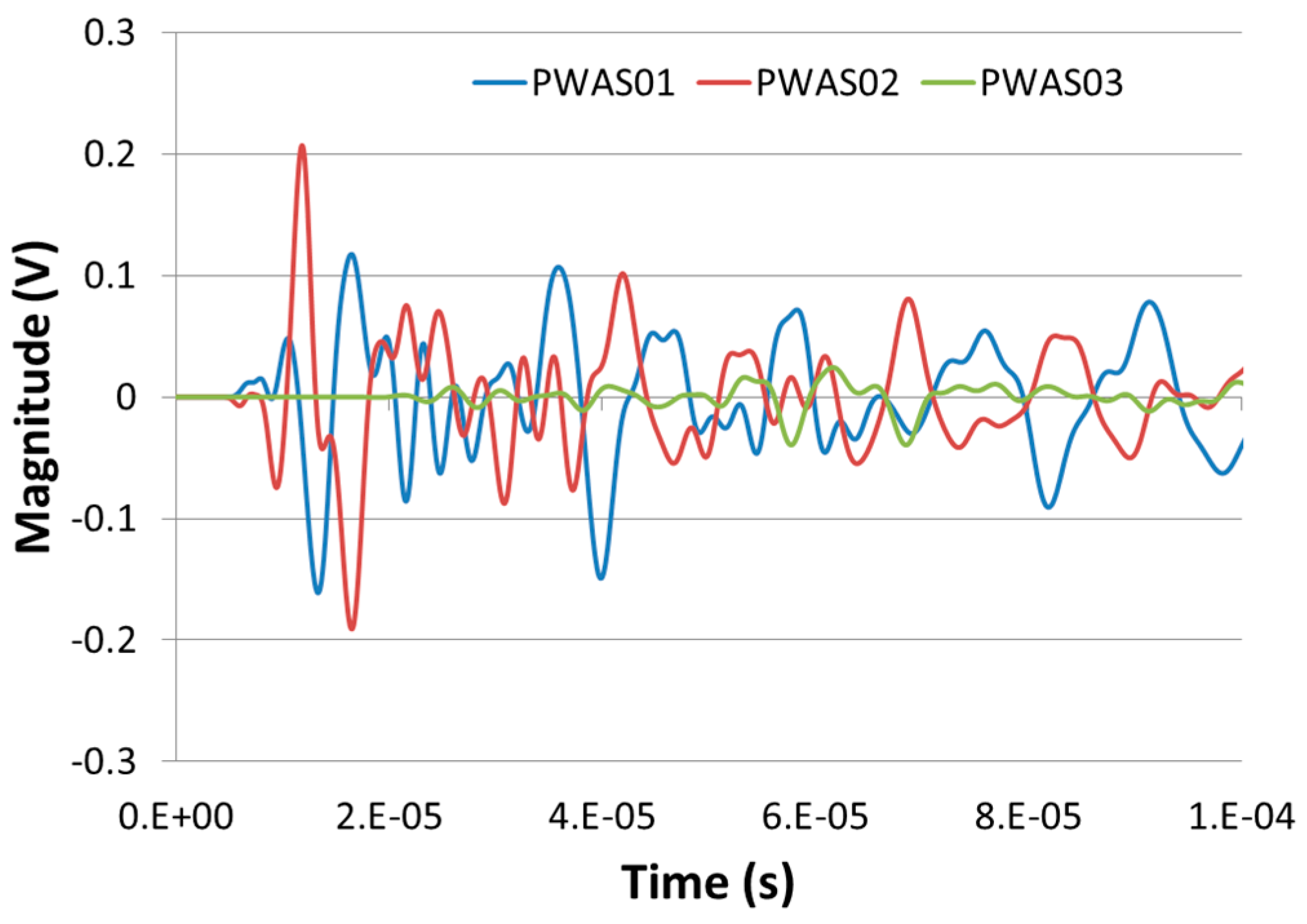
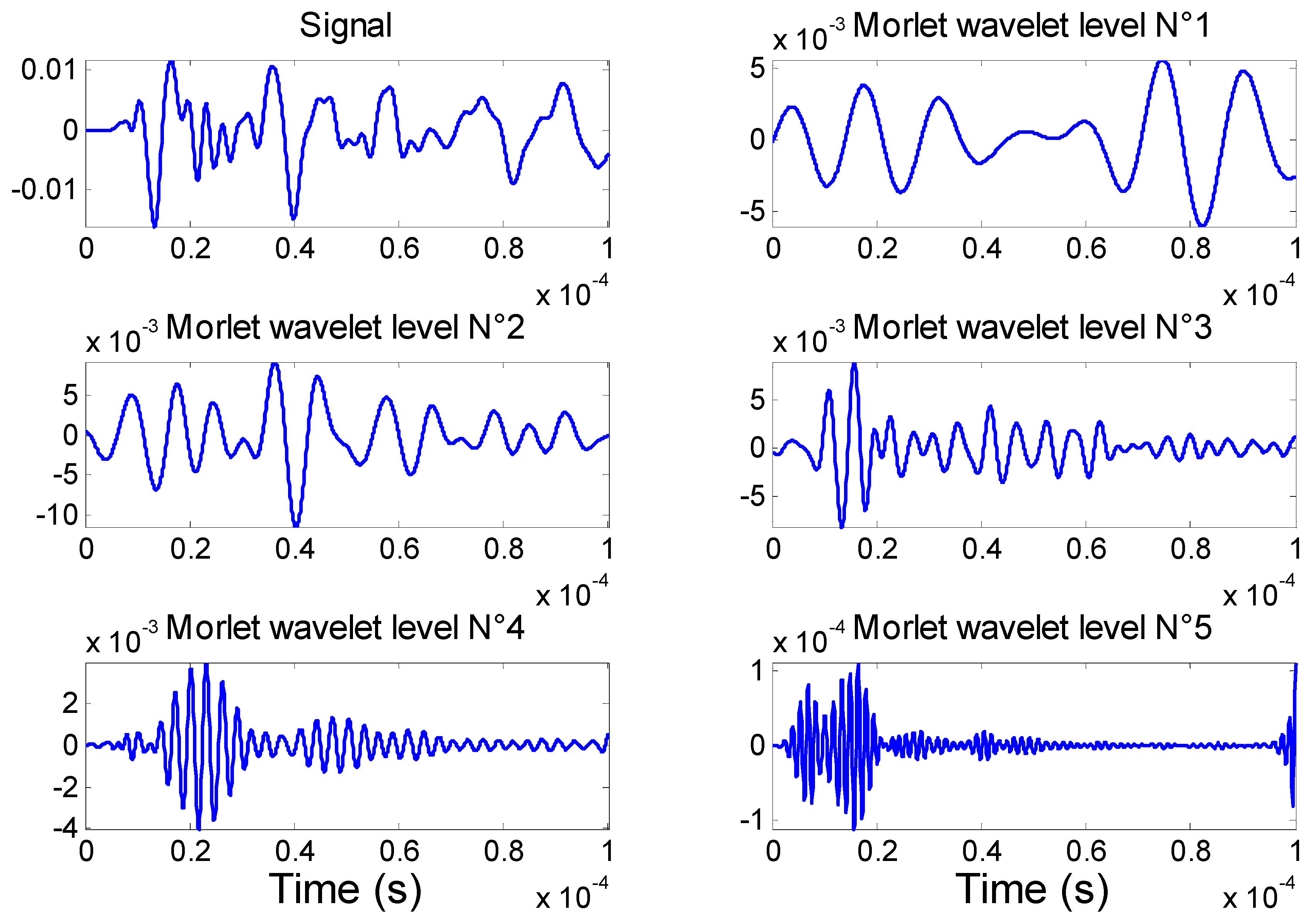
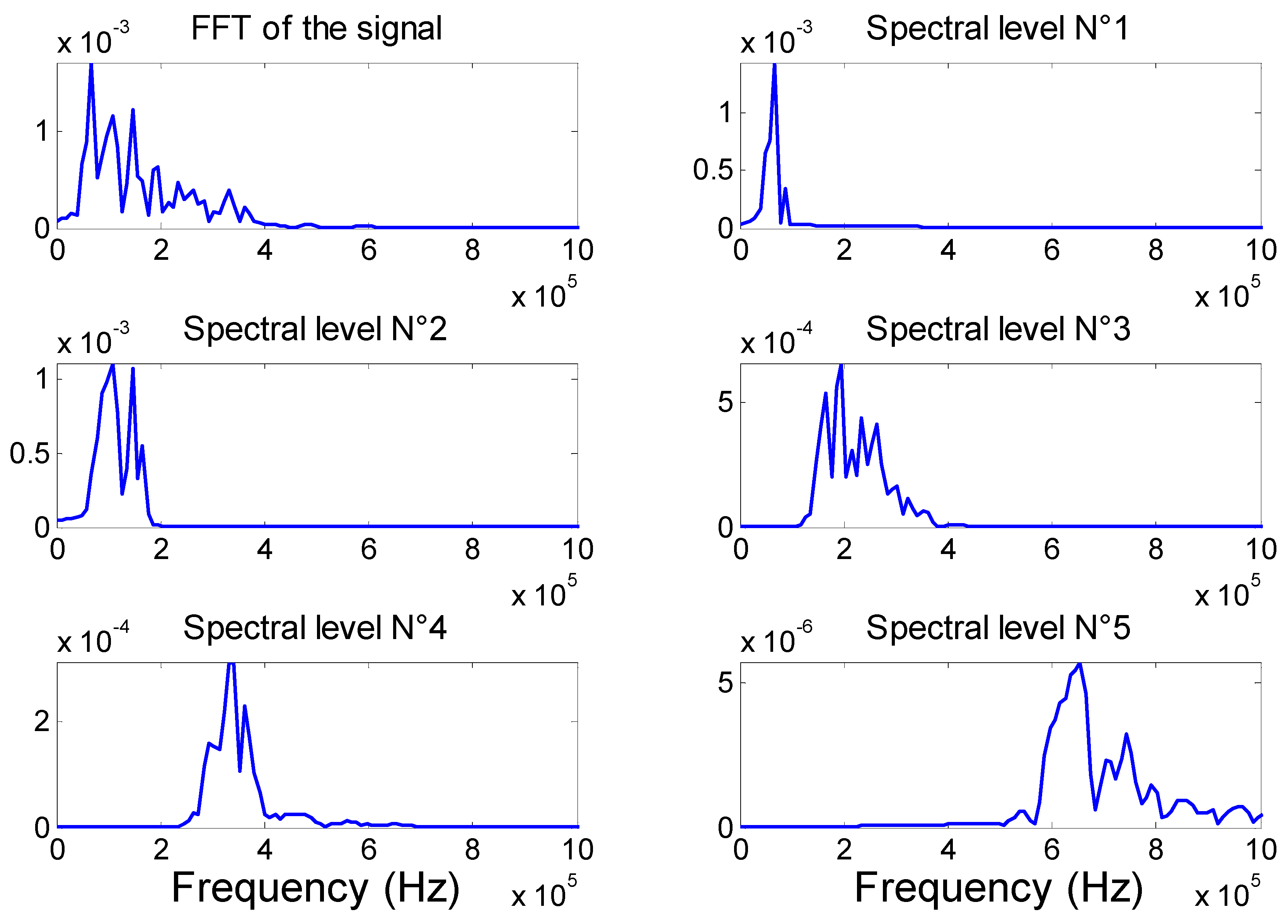
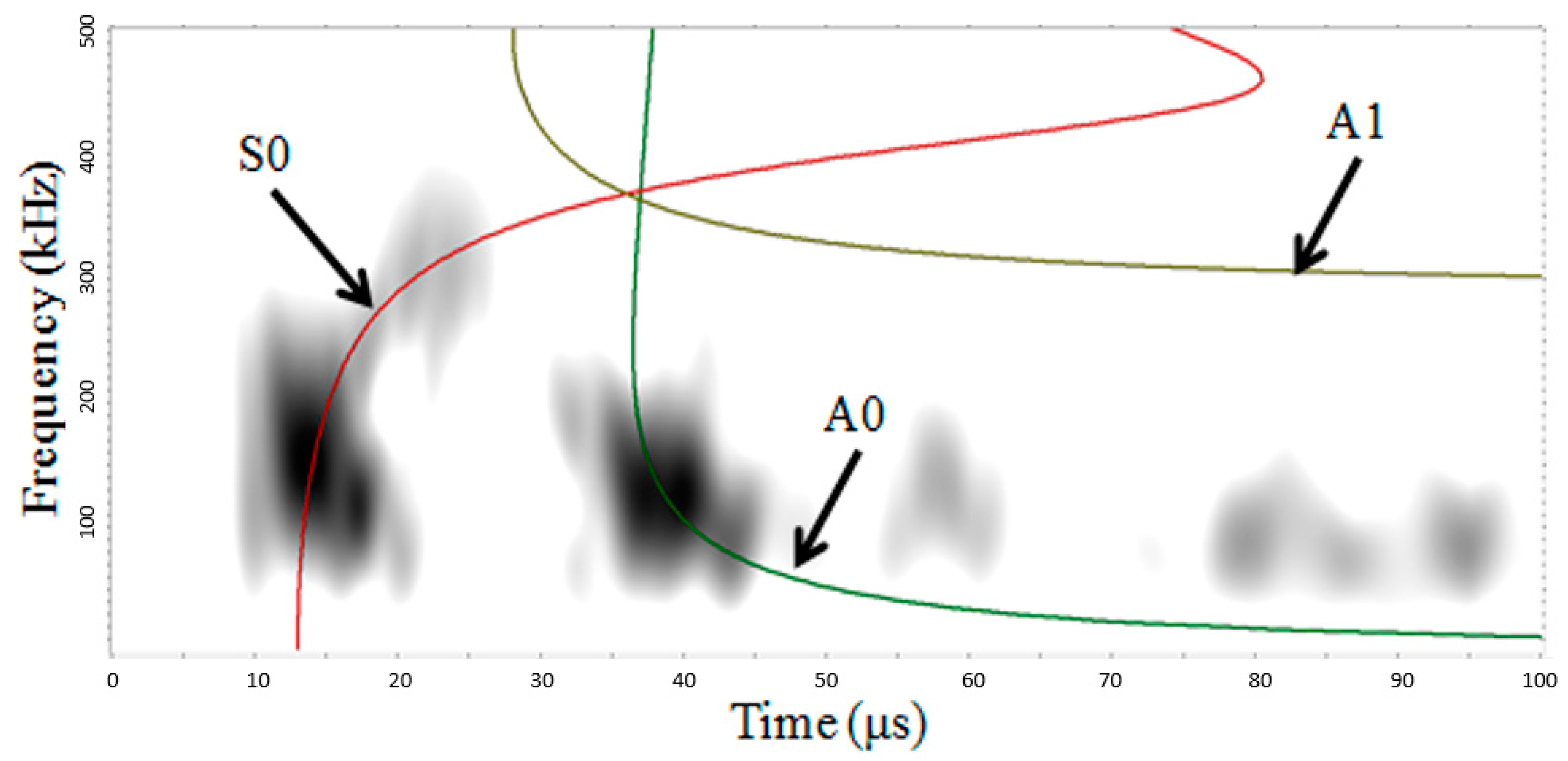
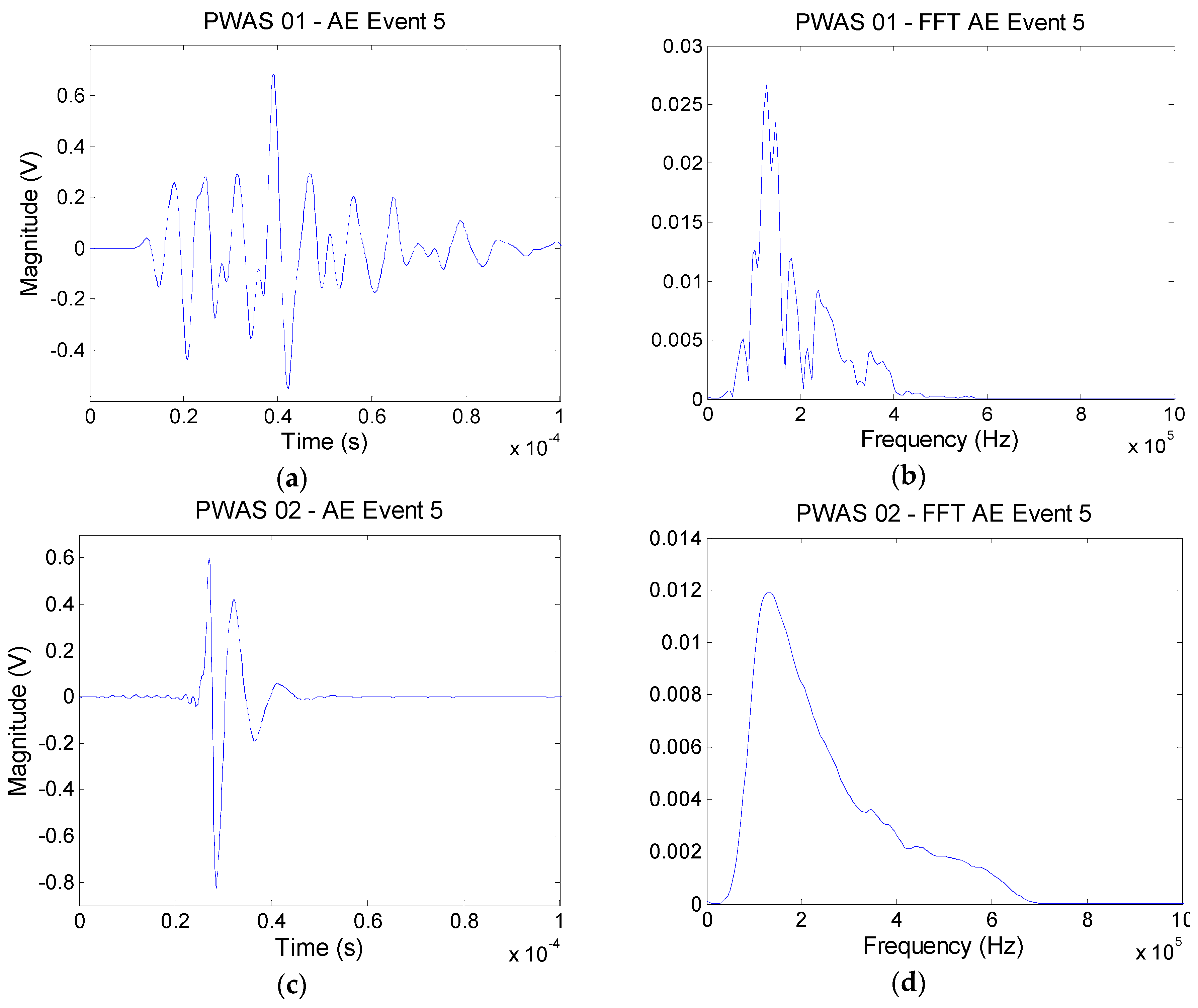
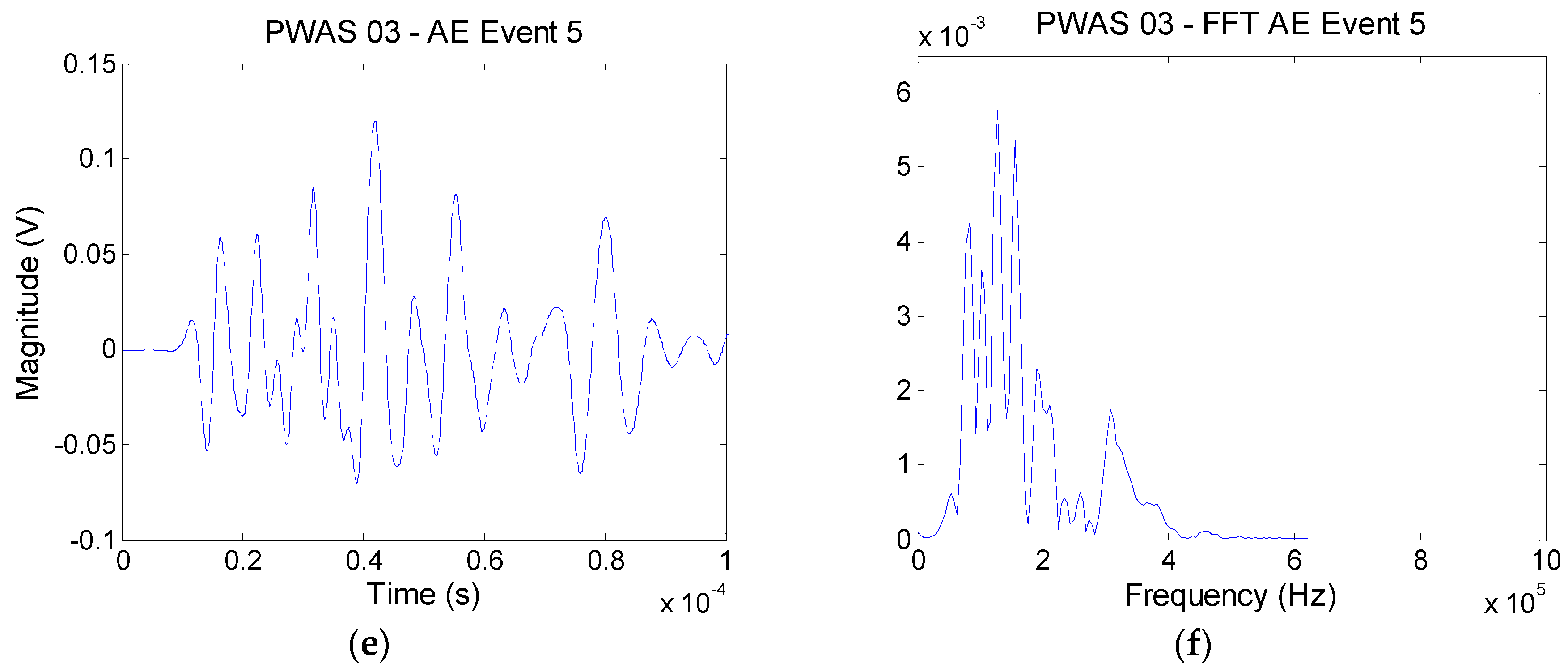
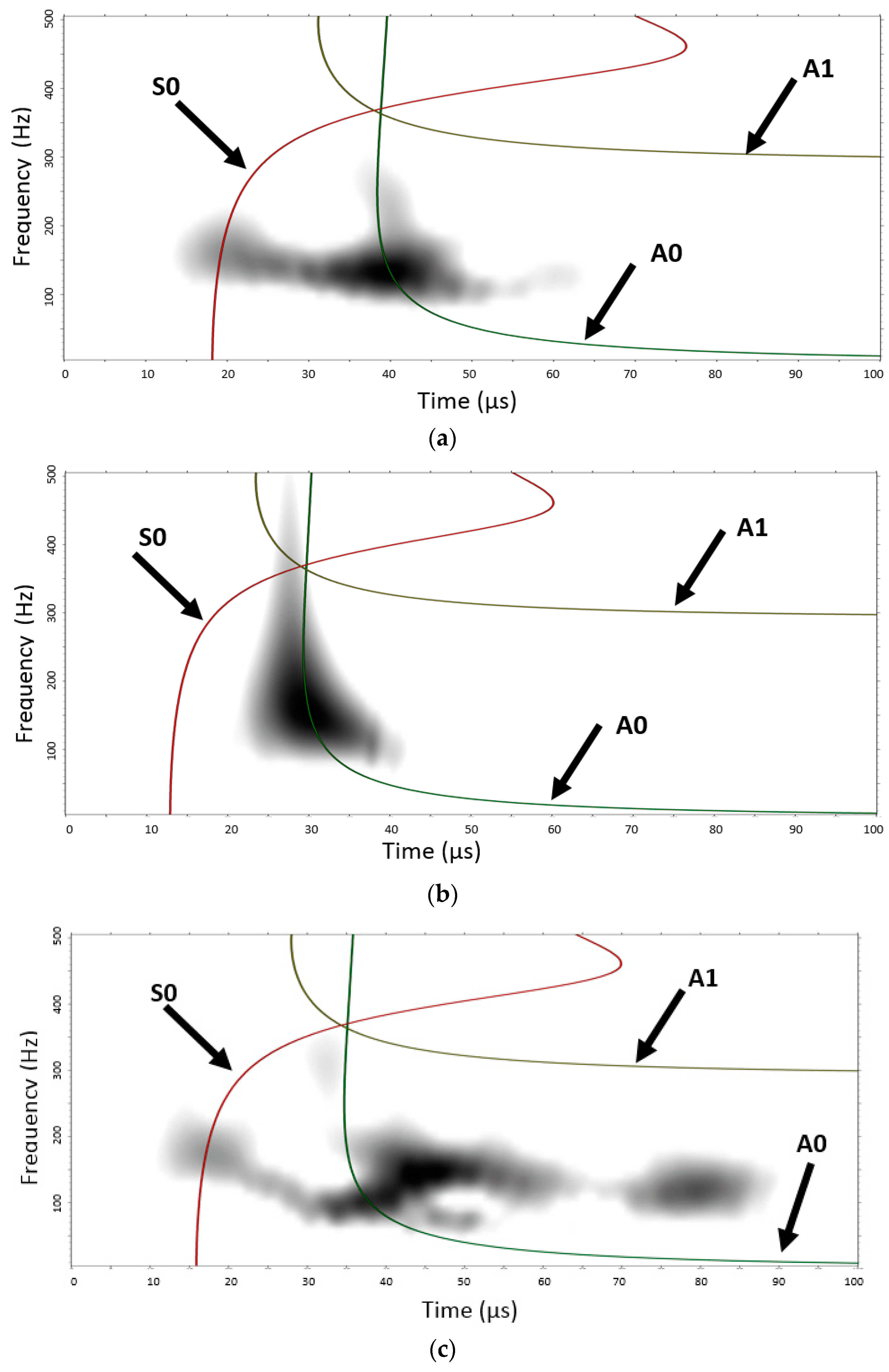
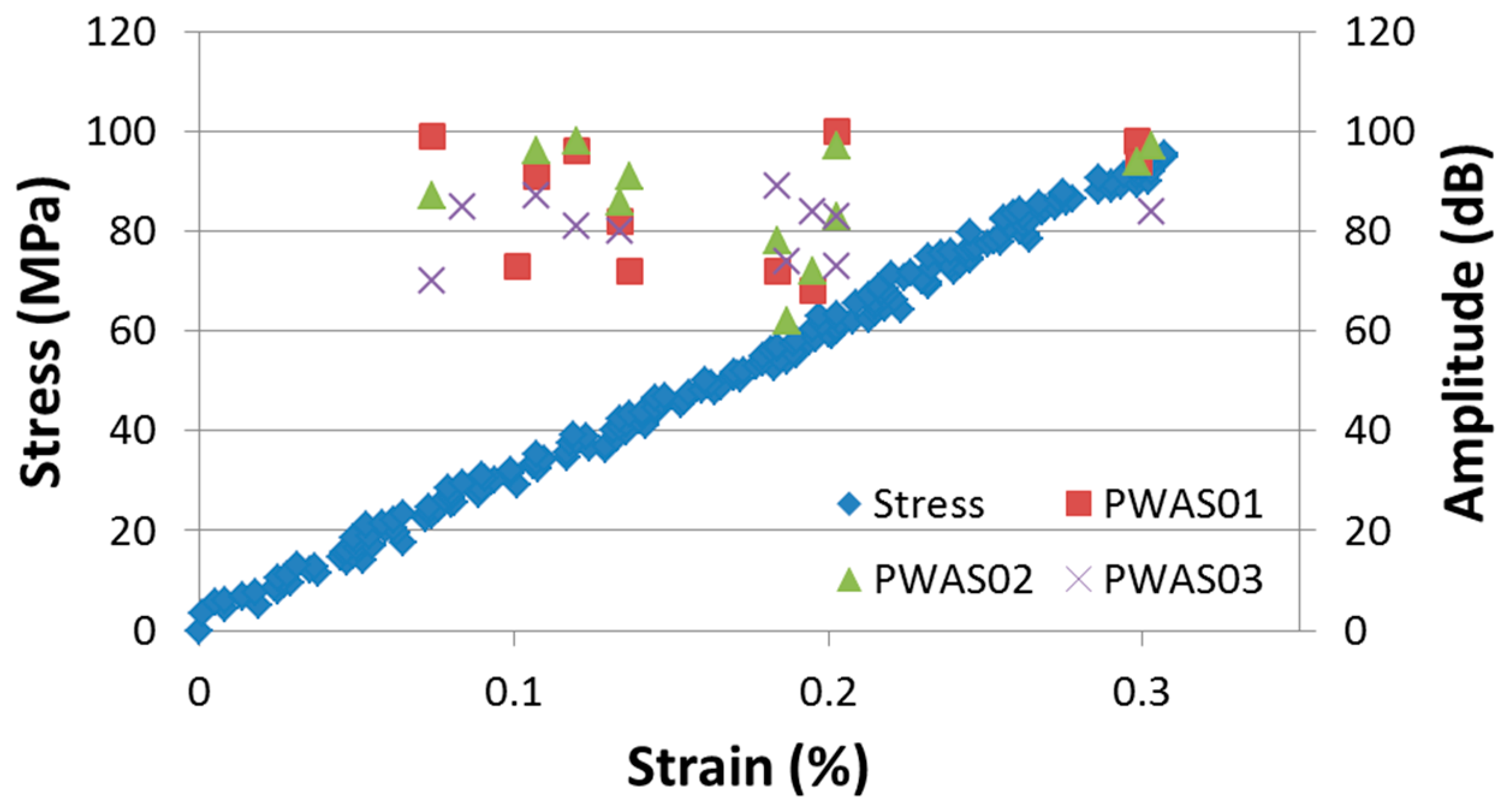
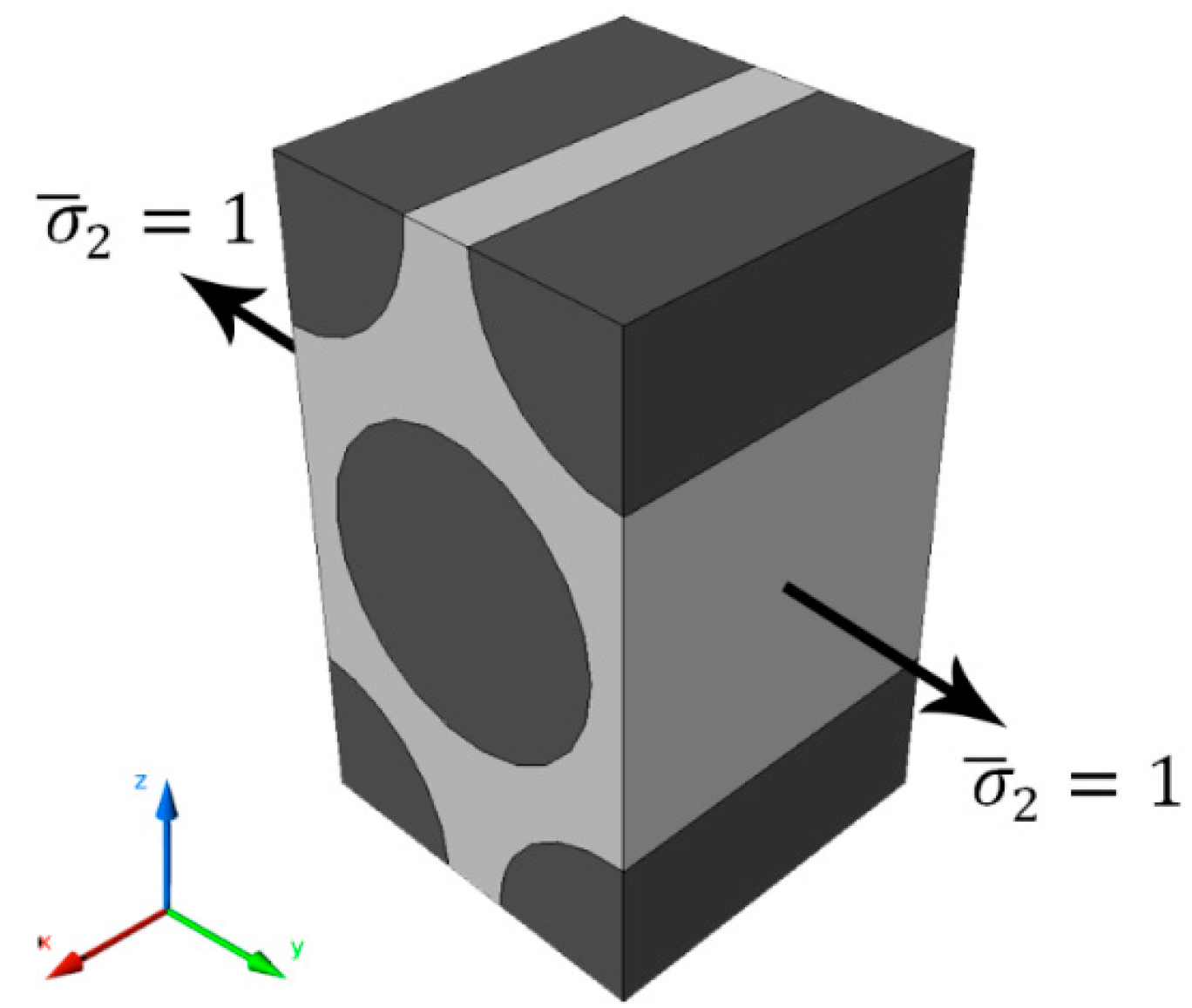
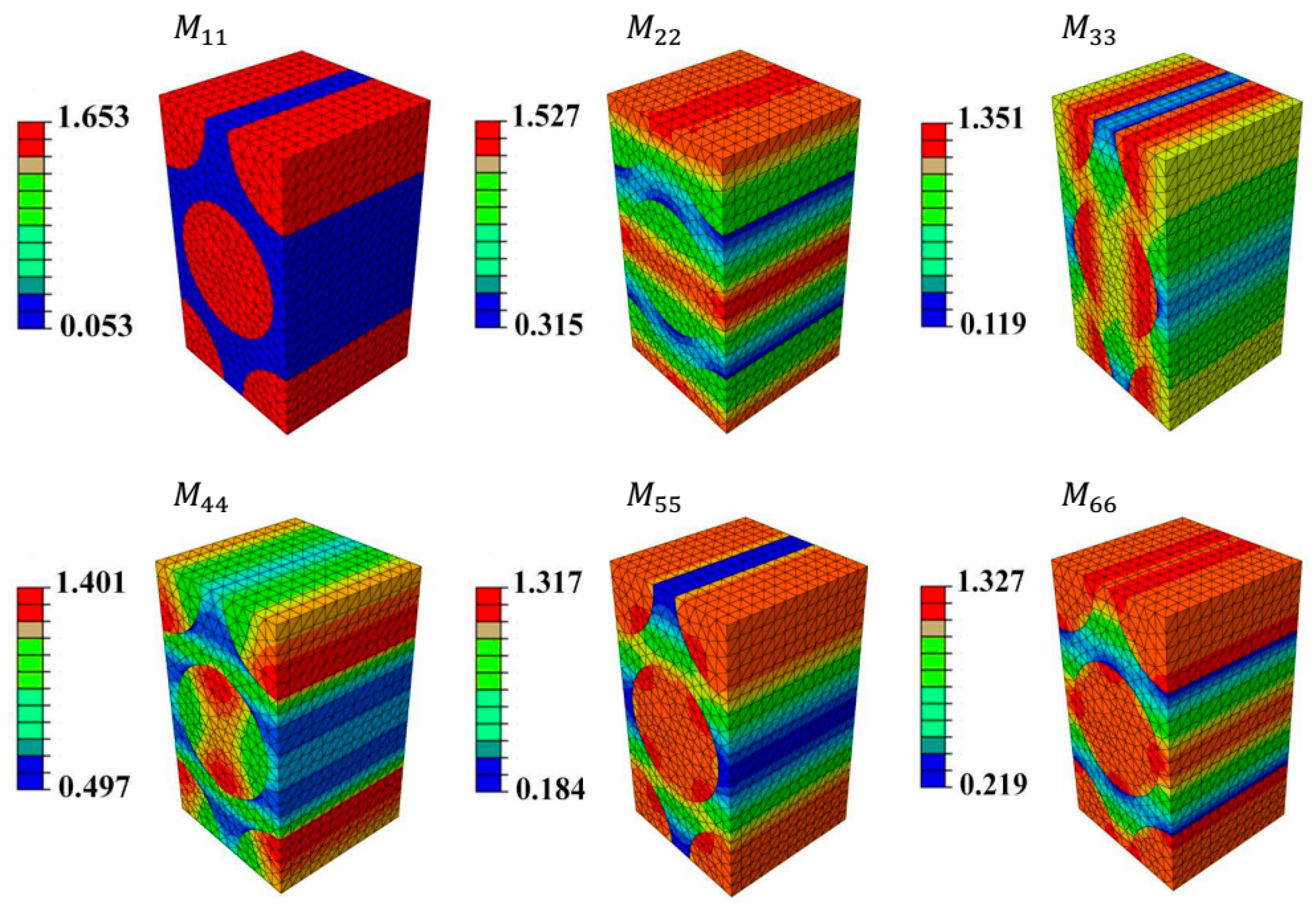
| Ref. | Matrix Cracking | Interface Decohesion (Fibre/Matrix) | Fibre/Matrix Friction and Fibres Pull-Out | Fibres Breakage |
|---|---|---|---|---|
| [6] | 30–45 dB | 45–55 dB | – | >55 dB |
| [7] | 60–80 dB | 70–90 dB | – | – |
| [8] | 50 dB | – | – | – |
| [9] | 40–70 dB | – | – | 60–100 dB |
| [10] | 40–55 dB | – | >80 dB | – |
| [11] | 33–45 dB | 50–68 dB | 69–86 dB | 87–100 dB |
| [12] | 40–78 dB | 72–100 dB | – | 95–100 dB |
| [13] | 40–55 dB | 60–65 dB | 65–85 dB | 85–95 dB |
| [5] | 35–80 dB | 50–80 dB | 70–100 dB | – |
| [14] | <70 dB | <60 dB | – | – |
| [15] | 35–55 dB | 55–100 dB | – | 35–80 dB |
| [16] | 40–60 dB | 50–70 dB | 80–100 dB | 80–100 dB |
| Ref. | Matrix Cracking | Interface Decohesion (Fibre/Matrix) | Fibre/Matrix Friction and Fibres Pull-Out | Fibres Breakage |
|---|---|---|---|---|
| [17] | 50–150 kHz | – | – | 140–180 kHz |
| [18] | 30–150 kHz | 30–100 kHz | 180–290 kHz | 300–400 kHz |
| [19] | 80–130 kHz | – | 250–410 kHz | 250–410 kHz |
| [14] | ~300 kHz | – | 300 kHz | >500 kHz |
| [20] | 50–180 kHz | 220–300 kHz | 180–220 kHz | >300 kHz |
| [21] | 90–110 kHz | – | 200–300 kHz | >420 kHz |
| [22] | <50 kHz | 200–300 kHz | 500–600 kHz | 400–500 kHz |
| [23] | ~140 kHz | ~300 kHz | – | ~405 kHz |
| [24] | 200–600 kHz | 200–350 kHz | 0.7–1.1 MHz | >1.5 MHz |
| [15] | 50–80 kHz | 50–150 kHz | – | 150–500 kHz |
| Mechanical Data | Experiment | With Binder | Without Binder | Difference (%) |
|---|---|---|---|---|
| 17.85 | 17.33 | 2.91 | ||
| 24.00 | 23.48 | 2.16 | ||
| – | 12.74 | 11.00 | 13.65 | |
| – | 5.18 | 4.95 | 4.50 | |
| – | 0.31 | 0.32 | 0.68 | |
| VF (%) | ||||
© 2016 by the authors; licensee MDPI, Basel, Switzerland. This article is an open access article distributed under the terms and conditions of the Creative Commons Attribution (CC-BY) license (http://creativecommons.org/licenses/by/4.0/).
Share and Cite
Gresil, M.; Saleh, M.N.; Soutis, C. Transverse Crack Detection in 3D Angle Interlock Glass Fibre Composites Using Acoustic Emission. Materials 2016, 9, 699. https://doi.org/10.3390/ma9080699
Gresil M, Saleh MN, Soutis C. Transverse Crack Detection in 3D Angle Interlock Glass Fibre Composites Using Acoustic Emission. Materials. 2016; 9(8):699. https://doi.org/10.3390/ma9080699
Chicago/Turabian StyleGresil, Matthieu, Mohamed Nasr Saleh, and Constantinos Soutis. 2016. "Transverse Crack Detection in 3D Angle Interlock Glass Fibre Composites Using Acoustic Emission" Materials 9, no. 8: 699. https://doi.org/10.3390/ma9080699
APA StyleGresil, M., Saleh, M. N., & Soutis, C. (2016). Transverse Crack Detection in 3D Angle Interlock Glass Fibre Composites Using Acoustic Emission. Materials, 9(8), 699. https://doi.org/10.3390/ma9080699








